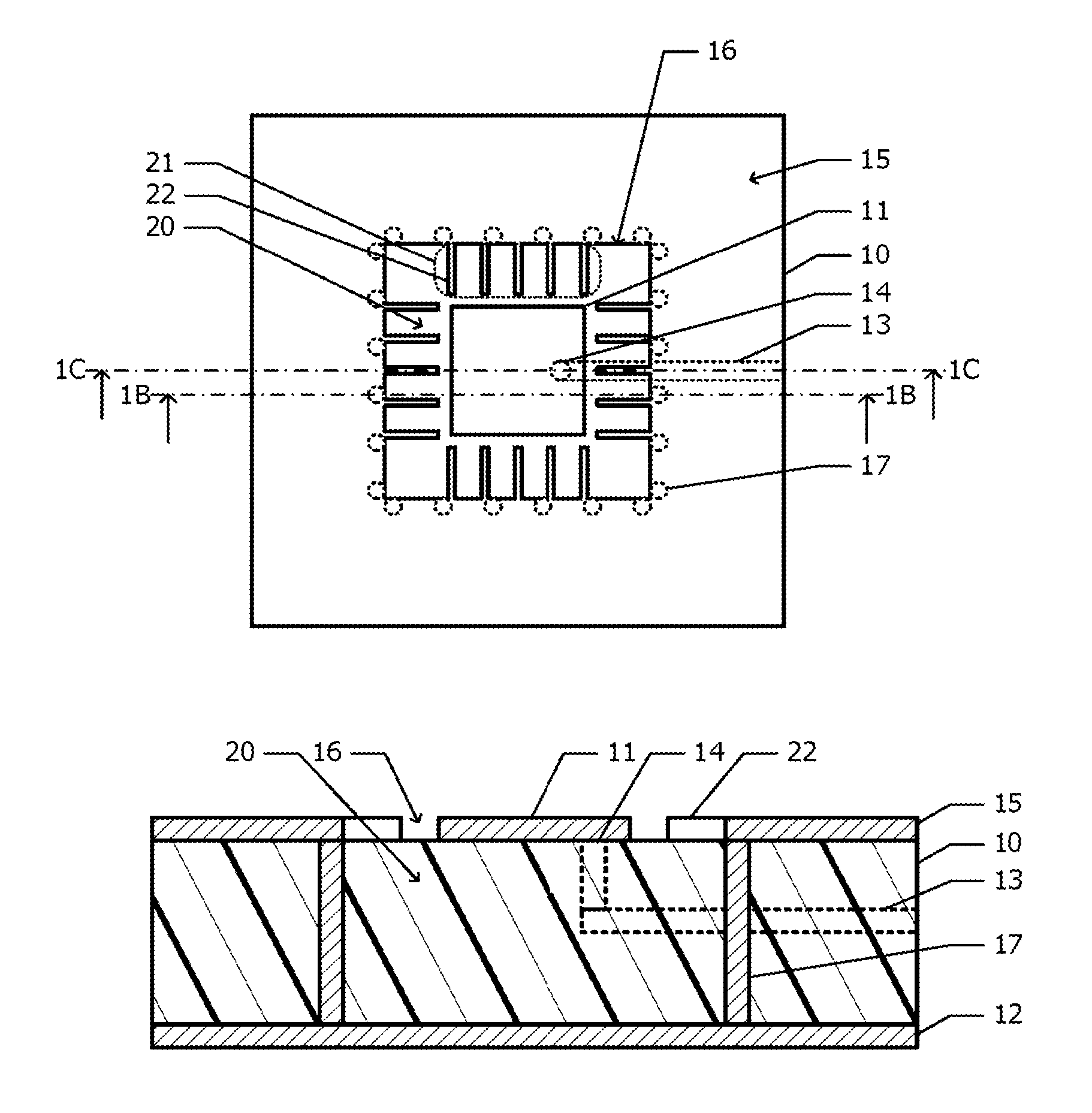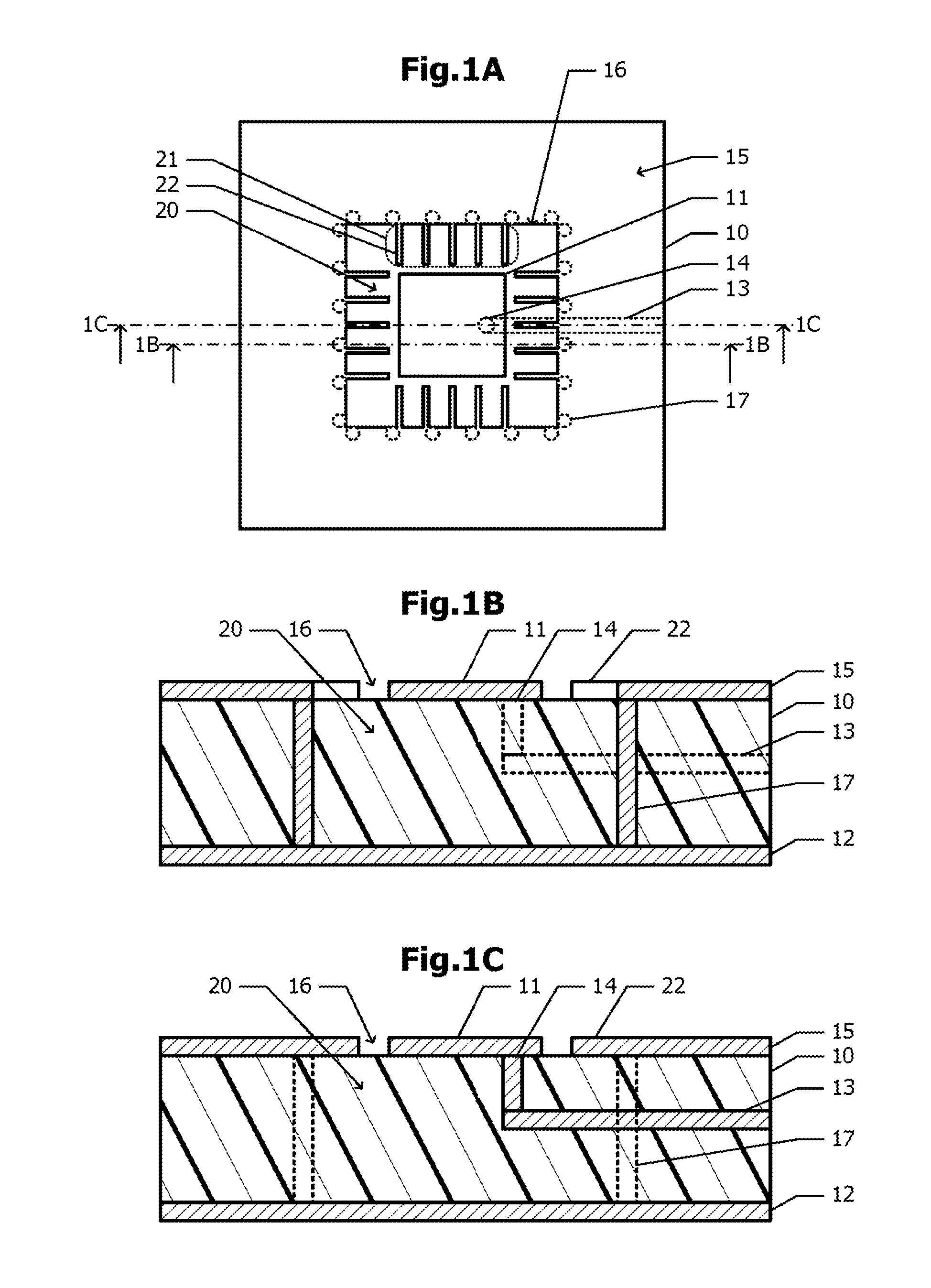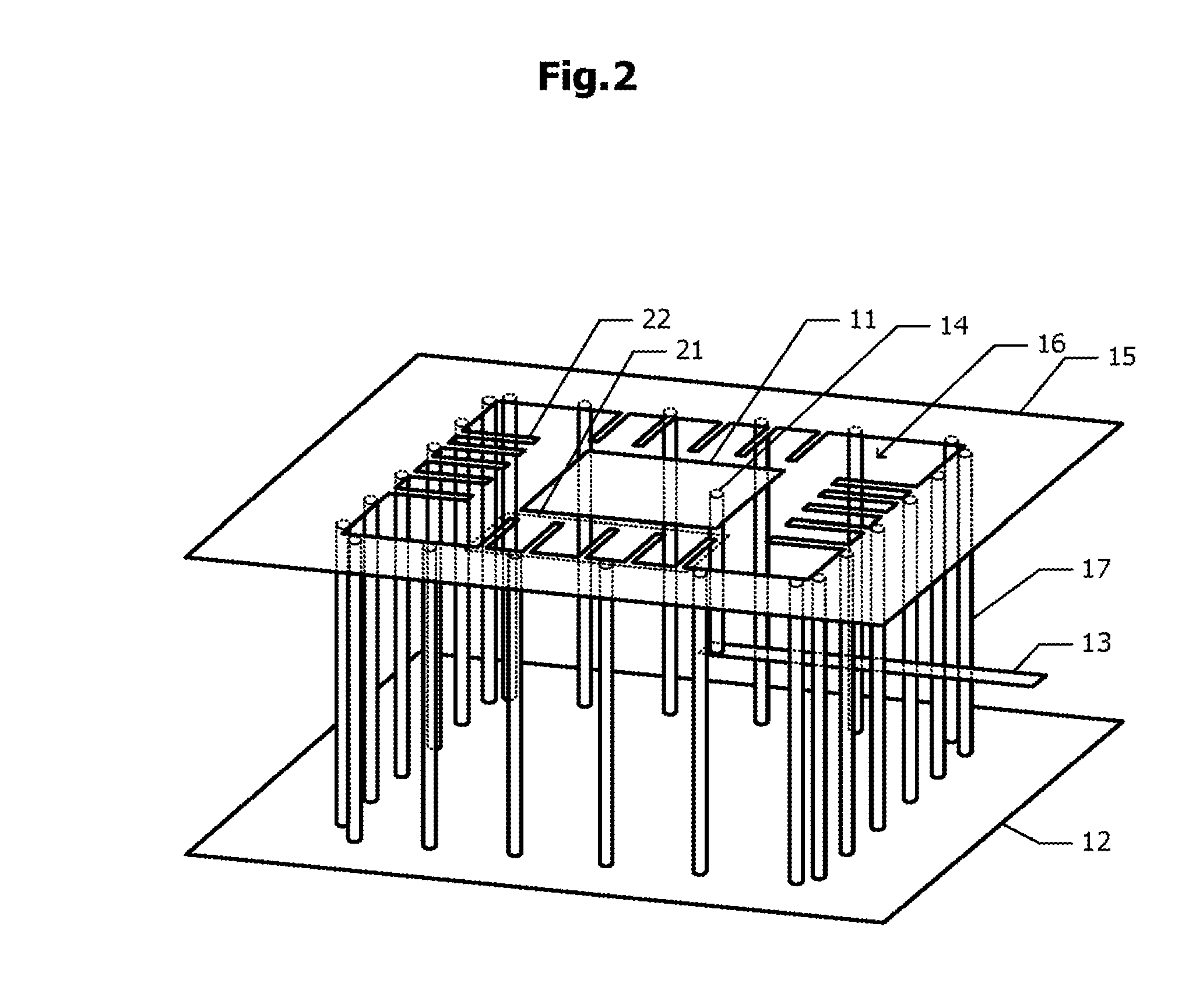Patch antenna
a technology of patch antenna and ebg structure, which is applied in the direction of individual energised antenna arrays, resonant antennas, substantially flat resonant elements, etc., can solve the problems of difficult to reduce the size of the antenna including the cavity, difficult to reduce the size of the antenna including the ring mushroom structure, and difficult to reduce the size of the antenna including the ebg structure. , to achieve the effect of suppressing the generation of surface waves,
- Summary
- Abstract
- Description
- Claims
- Application Information
AI Technical Summary
Benefits of technology
Problems solved by technology
Method used
Image
Examples
first embodiment
[0042]FIG. 1A is a plan view of a patch antenna according to a first embodiment. FIGS. 1B and 1C are cross-sectional views taken along dot-dash lines 1B-1B and 1C-1C in FIG. 1A, respectively. FIG. 2 is a perspective view of the patch antenna according to the first embodiment.
[0043]A radiation electrode 11 and a surface-layer conductive plate 15 are disposed on a surface of a dielectric substrate 10. The surface-layer conductive plate 15 has an opening 16. The radiation electrode 11 is disposed inside the opening 16. The surface where the radiation electrode 11 and the surface-layer conductive plate 15 are disposed is referred to as “first surface.” A surface opposite to the first surface is referred to as “second surface.” A ground conductive plate 12 is disposed on the second surface of the dielectric substrate 10. An example planar shape of each of the radiation electrode 11 and opening 16 may be a square or rectangle. The edges of the radiation electrode 11 and the edges of the o...
second embodiment
[0052]Next, a patch antenna according to a second embodiment is described with reference to FIGS. 3A to 3C. Differences from the patch antenna according to the first embodiment illustrated in FIGS. 1A to 2 are described below, and the description about the same configurations is omitted.
[0053]FIG. 3A is a plan view of the patch antenna according to the second embodiment. FIGS. 3B and 3C are cross-sectional views taken along dot-dash lines 3B-3B and 3C-3C in FIG. 3A, respectively. In the first embodiment, no other conductive plates are disposed between the ground conductive plate 12 and surface-layer conductive plate 15 (FIGS. 1B and 1C). In the second embodiment, as illustrated in FIGS. 3B and 3C, other inner-layer conductive plates 25 and 26 are disposed between the ground conductive plate 12 and surface-layer conductive plate 15.
[0054]Each of the inner-layer conductive plates 25 and 26 has the same planar shape as that of the surface-layer conductive plate 15. That is, the inner-l...
third embodiment
[0056]A patch antenna according to a third embodiment is described with reference to FIGS. 4A and 4B. Differences from the patch antenna according to the first embodiment illustrated in FIGS. 1A to 2 are described below, and the description about the same configurations is omitted.
[0057]FIGS. 4A and 4B are cross-sectional views taken along the dot-dash lines 1B-1B and 1C-1C in FIG. 1A, respectively. In the third embodiment, an inner-layer conductive plate 25 and linear conductors 29 are added. The inner-layer conductive plate 25 and linear conductors 29 have the same configurations as those of the inner-layer conductive plate 25 and linear conductors 29 in the patch antenna according to the second embodiment illustrated in FIGS. 3B and 3C.
[0058]The radiation electrode 11 in the patch antenna according to the third embodiment has a stacking structure including a passive electrode 11A and a feeding electrode 11B. The passive electrode 11A has the same planar shape as that of the radia...
PUM
 Login to View More
Login to View More Abstract
Description
Claims
Application Information
 Login to View More
Login to View More - R&D
- Intellectual Property
- Life Sciences
- Materials
- Tech Scout
- Unparalleled Data Quality
- Higher Quality Content
- 60% Fewer Hallucinations
Browse by: Latest US Patents, China's latest patents, Technical Efficacy Thesaurus, Application Domain, Technology Topic, Popular Technical Reports.
© 2025 PatSnap. All rights reserved.Legal|Privacy policy|Modern Slavery Act Transparency Statement|Sitemap|About US| Contact US: help@patsnap.com



